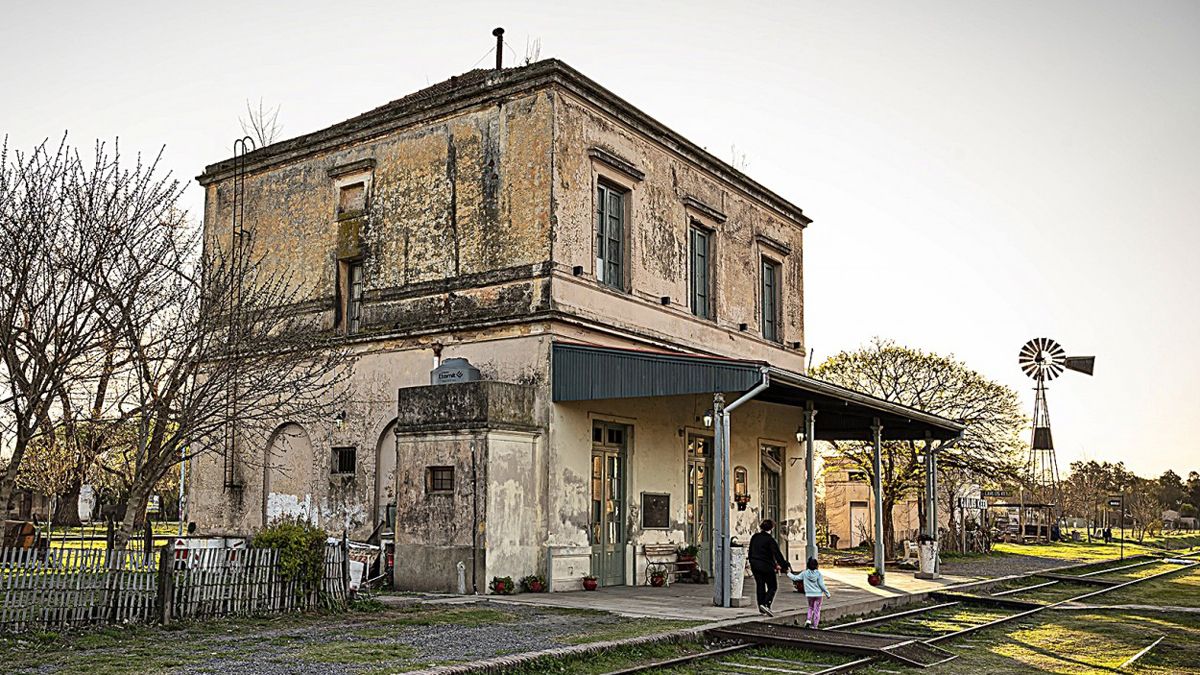Saint Peter
image.png
San Pedro is a town linked to the production of citrus fruits and famous for its oranges. It is only 164km from Buenos Aires and everything is reached by highway by national route 9, towards Campana, Zárate and Rosario.
How to get to San Pedro?
In addition to going by car, you can get to San Pedro from the City of Buenos Aires:
- There are minibus Billoch combis that leave from Recoleta and Rucar de Once.
- Nueva Chevallier buses leave from Retiro to the terminal.
- San Pedro Bus and EVHSA are other transports that arrive.
- Miter Line Train.
- What to do in San Pedro for a weekend?
Things to do in San Pedro
image.png

In San Pedro you can walk through the historical and cultural center of San Pedro, walk the pedestrian and the Costanera with the river ravine.
In addition, there are several museums to visit such as the Paleontological Museum, the Fray Maria Bottaro Regional Historical Museum and the Ara Yrigoyen Museum Ship. I did not have the opportunity to go to any of them due to lack of time, but I share them with you so that you take them into account.
The river is a great attraction and there are hotels and campsites.
Thomas Jofre
image.png

Tomás Jofré is the name of this town in Mercedes, which has only 190 inhabitants and is chosen as a local tourism destination. One of those “little towns” that is closest to the West Zone, whose original name is Jorge Born. Located in the district of Mercedes and 12 kilometers from the main city of the party, it offers a varied gastronomic option and outdoor activities to spend the day.
The place is known for being a weekend tourist center where visitors can enjoy traditional life in the Pampean countryside and a gastronomic center that has more than 20 restaurants. Being so close to Mercedes and Luján, it is an option very chosen by the residents of the West Zone.
How to get to Tomás Jofré?
For the residents of the West Zone and the rest of the province of Buenos Aires, it is convenient to take the West Access and before reaching the urban area of Luján take the exit of National Route 5 (Autopista Luján – Bragado). There you have to go to Gowland and turn at the entrance of Provincial Route 42 (kilometer 91) to take the driveway to this town in the Province of Buenos Aires.
Carlos Keen
image.png

Carlos Keen (pronounced “ken” and not “kin”) is a tourist town of the Luján Party in the Province of Buenos Aires. It is located 75 km from the City of Buenos Aires and 16 km from the city of Luján.
It has about 500 inhabitants approximately. It owes its name to Doctor Carlos Keen, lawyer and journalist, born in Las Flores in 1840, who participated with the rank of lieutenant colonel in the War of the Triple Alliance and was seriously wounded in the battle of Pehuajó. He died in the yellow fever epidemic in Buenos Aires in 1871. He did not know the town that bears his name; it did not inhabit or have anything to do with its creation.
In the town you can see the typical buildings of the late nineteenth century, which still retain their architecture with facades of classic properties that were recycled.
In its beginnings it was characterized by being a center for the collection and dispatch of zonal production, in which agricultural and livestock enterprises predominated.
It came to have almost 4000 inhabitants and important shops: general stores, shops, shoe stores and hardware stores; houses specialized in all kinds of agricultural machines and instruments, corralons, stables and stables for rent; two primary schools, three clubs, pharmacies, telephony, Civil Registry, Justice of the Peace, police station, flour mill, blacksmiths, gasoline dispensers, hotels, restaurants, pensions, and so on.
It is known for its excellent gastronomy, its various traditional restaurants and its ranches. It is part of the “Tourist Towns” program of the Province of Buenos Aires, thanks to which it has become a very popular destination on weekends.
There are country restaurants, antique houses, horseback riding, and sulky rides. Also dressage and folklore from Círculo Criollo Martín Fierro. Carlos Keen is the ideal place to take a weekend walk in a relaxed, small-town and natural environment.
Water victory
image.png

Victoria del Agua is located on the outskirts of the town of Victoria province of Entre Ríos, close to its urban area.
It is a 40-hectare property set in a suggestive topography facing the majestic landscape of the Paraná Delta and its Laguna del Pescado, where the flora and fauna are characterized by the presence of native species.
Forming a replica of a hidden lagoon under a grotto, inspired by the Cenotes of the Yucatan Peninsula, the Cenote del Agua Escondida offers a complex of covered and semi-covered pools.
With a design that evokes the eccentric dishes of the Irupé, a set of pools and Solarium takes the name of El Remanso del Irupé. Its magnitude positions it as a “winter and summer spa”, being a destination to choose from all year round.
VDA’s thermal water is extracted from suprabasaltic and intrabasaltic aquifers with depths reaching 1,050 meters, achieving a wellhead temperature of between 36 and 38 degrees Celsius.
Its particular mineral characteristics make it an attraction in itself and determine it as ideal for balneotherapy and recreational activities, with salinity waters equivalent to those of marine waters and with a great variety of natural mineral components.
Tiger
image.png

More than 5 million visitors a year have consolidated Tigre as one of the main tourist destinations in Argentina.
Without a doubt, the natural beauty of the Delta is one of the main attractions of the Tigre territory. It is an ecological paradise, in which human activity takes place in harmony with nature, and this balance is immediately perceived by those who visit it. Navigating its rivers and streams, enjoying the exuberant vegetation, appreciating the island buildings, venturing into nature and practicing water sports are just some of the activities that this particular geography offers.
In addition to the captivating Delta, in Tigre you can also visit other beautiful places such as Puerto de Frutos, Paseo Victorica or Villa La Ñata, learn about its history and culture in prestigious museums and art spaces or touring the circuit of the old Camino Real, and enjoy numerous attractions such as Parque de la Costa and a varied gastronomic and hotel offer.
Tigre has been part of Argentine and Buenos Aires history since its most remote times. The original peoples, the colonial era, the struggles for independence and the construction of modern Argentina generated in the district a rich historical legacy that reaches our present and is projected into the future.
Its population was nourished with the contribution of each of the immigrant communities that settled in the district and that left a splendid cultural and architectural heritage, which is expressed in true jewels such as the Tigre Art Museum (MAT) and the traditional and iconic rowing clubs.
With the revaluation of its main attractions, tours on the tourist bus and night outings along rivers and streams, Tigre created its own tourism model, based on the improvement of its offer.
Source From: Ambito
David William is a talented author who has made a name for himself in the world of writing. He is a professional author who writes on a wide range of topics, from general interest to opinion news. David is currently working as a writer at 24 hours worlds where he brings his unique perspective and in-depth research to his articles, making them both informative and engaging.




